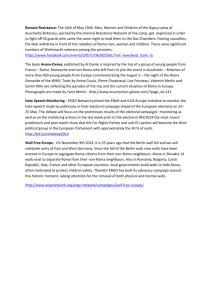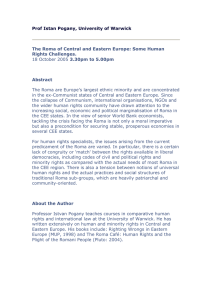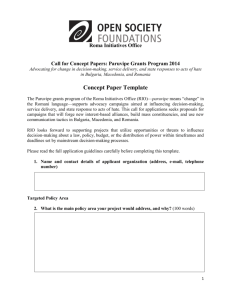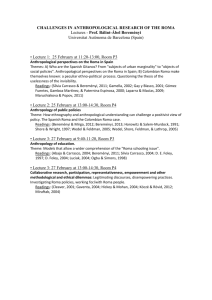European Roma Policy Analysis: Challenges & Implications
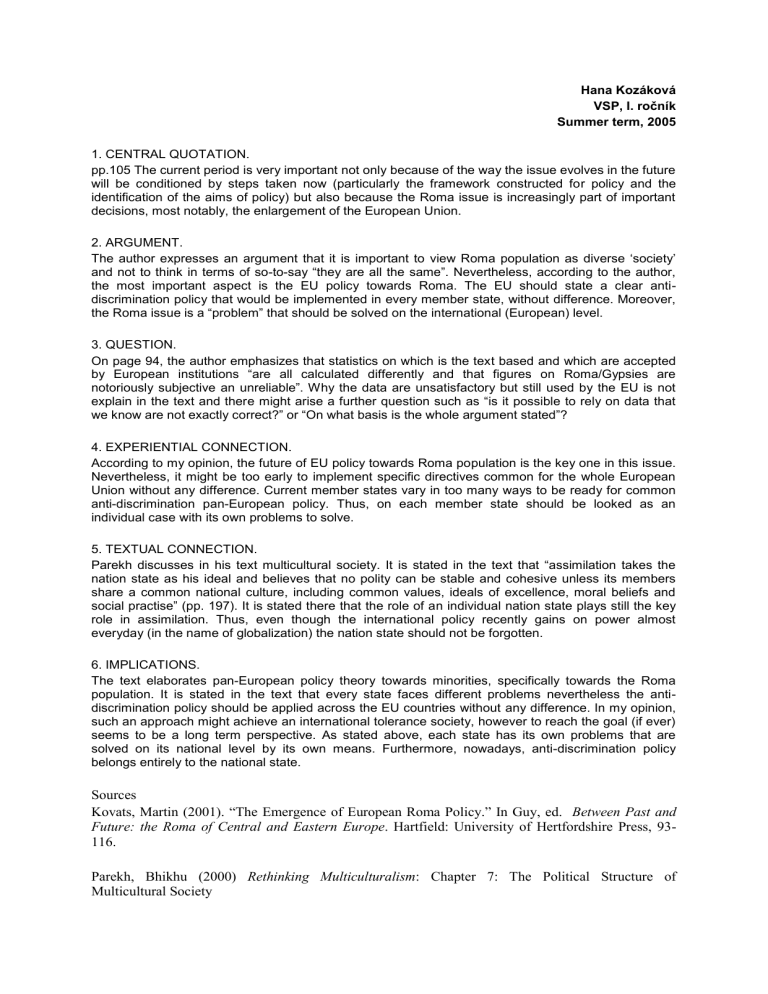
Hana Kozáková
VSP, I. ročník
Summer term, 2005
1. CENTRAL QUOTATION. pp.105 The current period is very important not only because of the way the issue evolves in the future will be conditioned by steps taken now (particularly the framework constructed for policy and the identification of the aims of policy) but also because the Roma issue is increasingly part of important decisions, most notably, the enlargement of the European Union.
2. ARGUMENT.
The author expresses an argument that it is important to view Roma population as diverse ‘society’ and not to think in terms of so-tosay “they are all the same”. Nevertheless, according to the author, the most important aspect is the EU policy towards Roma. The EU should state a clear antidiscrimination policy that would be implemented in every member state, without difference. Moreover, the Roma issue is a “problem” that should be solved on the international (European) level.
3. QUESTION.
On page 94, the author emphasizes that statistics on which is the text based and which are accepted by European institutions “are all calculated differently and that figures on Roma/Gypsies are notoriously subjective an unreliable”. Why the data are unsatisfactory but still used by the EU is not explain in the text and ther e might arise a further question such as “is it possible to rely on data that we know are not exactly correct?” or “On what basis is the whole argument stated”?
4. EXPERIENTIAL CONNECTION.
According to my opinion, the future of EU policy towards Roma population is the key one in this issue.
Nevertheless, it might be too early to implement specific directives common for the whole European
Union without any difference. Current member states vary in too many ways to be ready for common anti-discrimination pan-European policy. Thus, on each member state should be looked as an individual case with its own problems to solve.
5. TEXTUAL CONNECTION.
Parekh discusses in his text multicultural society. It is stated in the text that “assimilation takes the nation state as his ideal and believes that no polity can be stable and cohesive unless its members share a common national culture, including common values, ideals of excellence, moral beliefs and social practise” (pp. 197). It is stated there that the role of an individual nation state plays still the key role in assimilation. Thus, even though the international policy recently gains on power almost everyday (in the name of globalization) the nation state should not be forgotten.
6. IMPLICATIONS.
The text elaborates pan-European policy theory towards minorities, specifically towards the Roma population. It is stated in the text that every state faces different problems nevertheless the antidiscrimination policy should be applied across the EU countries without any difference. In my opinion, such an approach might achieve an international tolerance society, however to reach the goal (if ever) seems to be a long term perspective. As stated above, each state has its own problems that are solved on its national level by its own means. Furthermore, nowadays, anti-discrimination policy belongs entirely to the national state.



